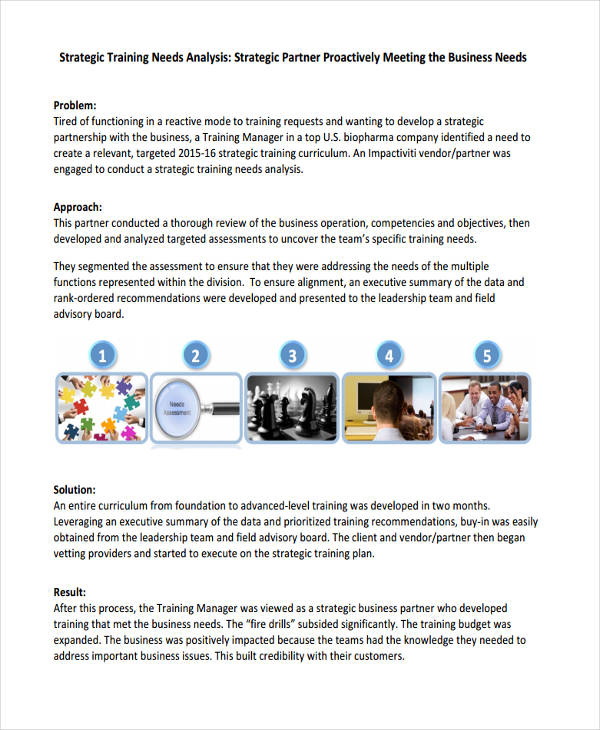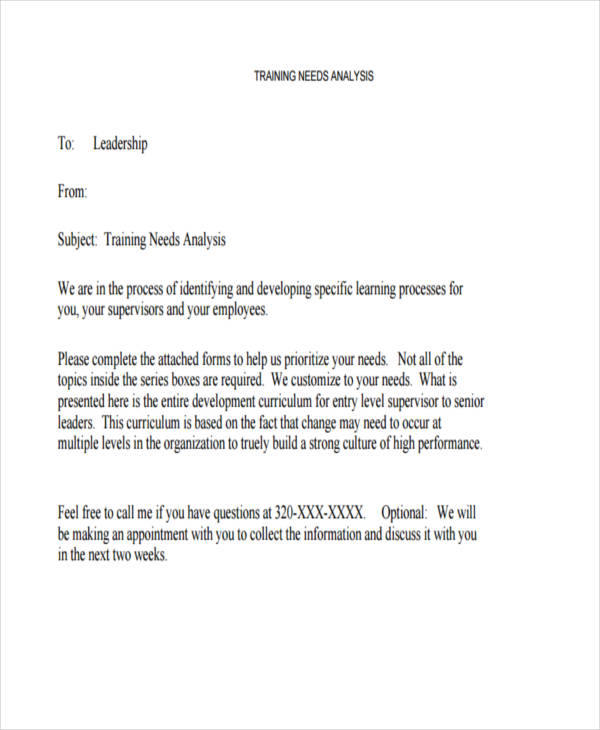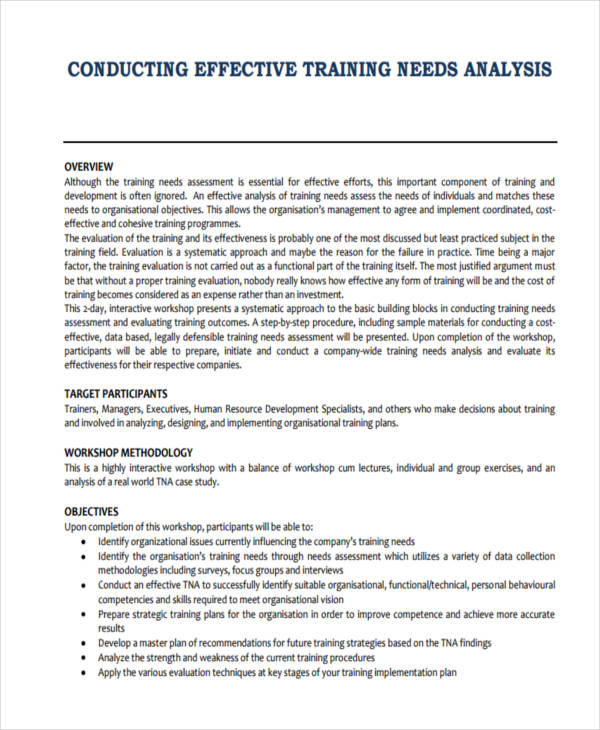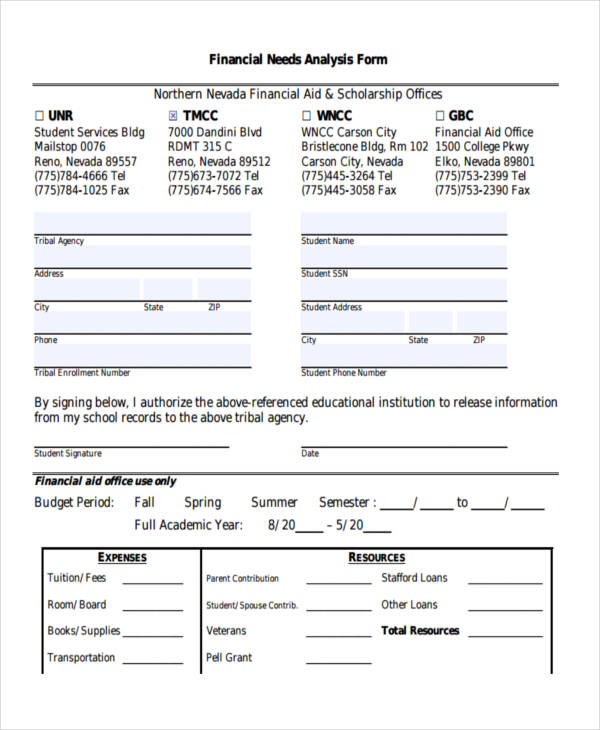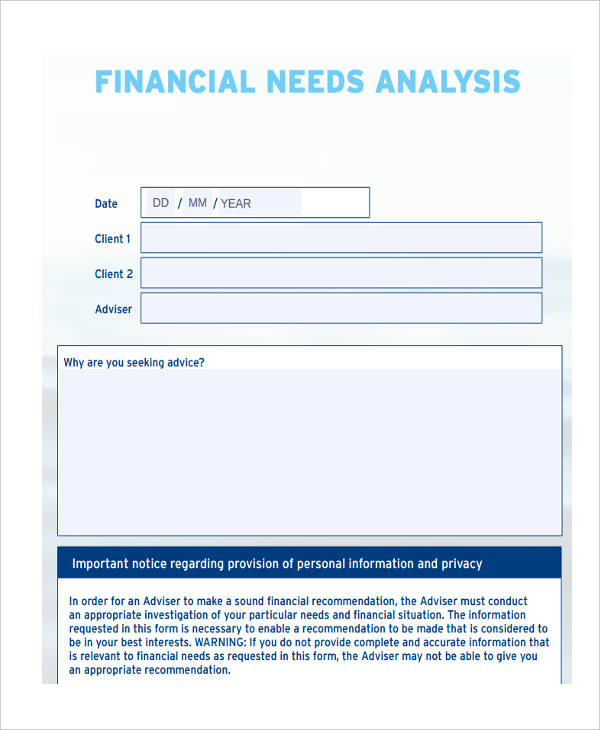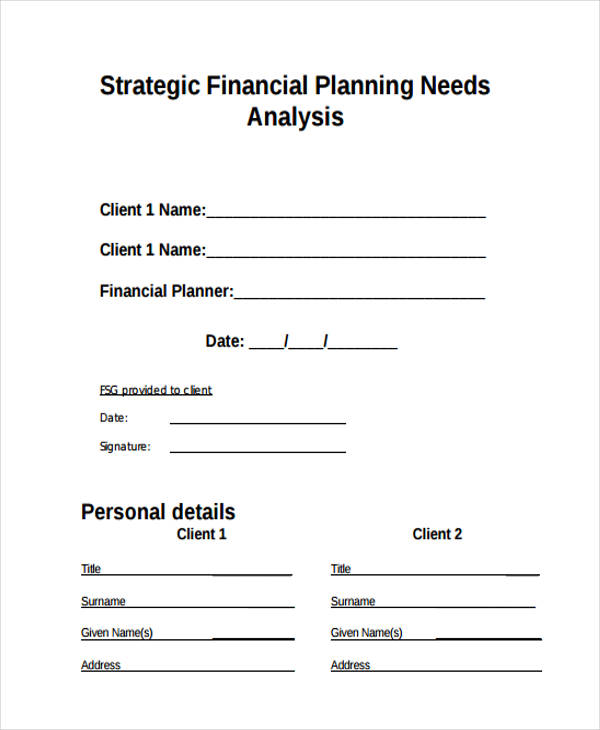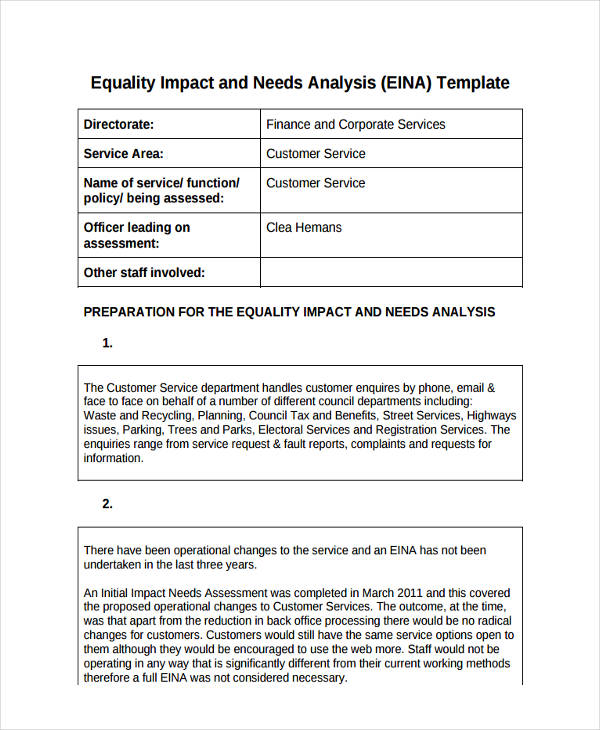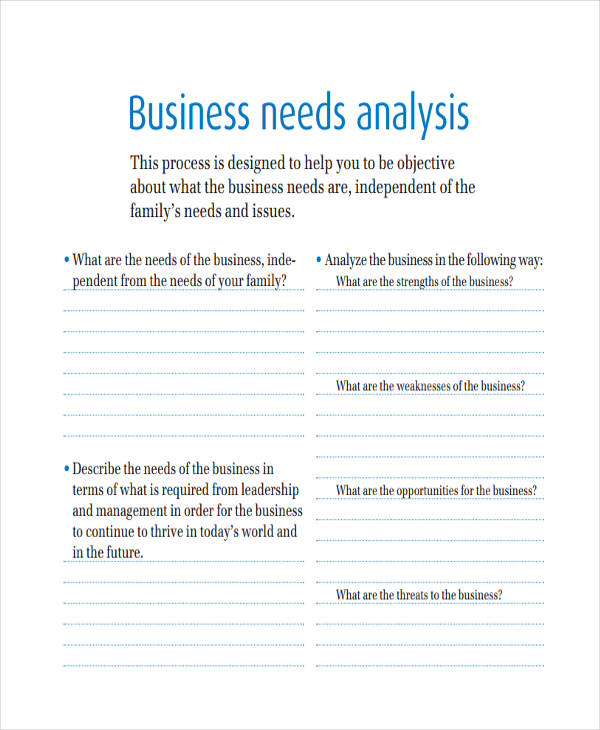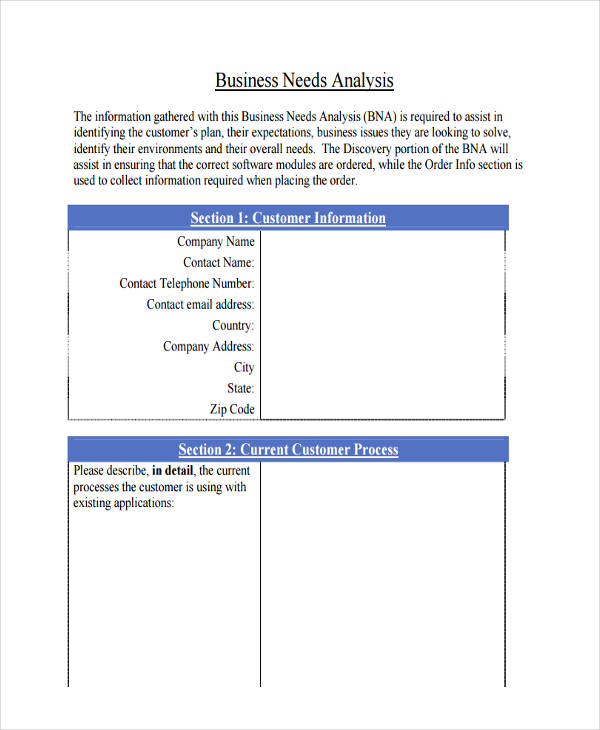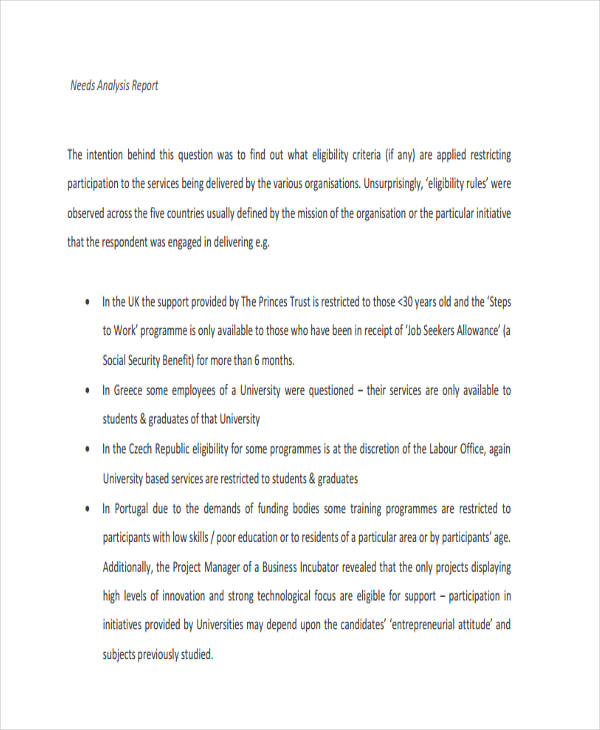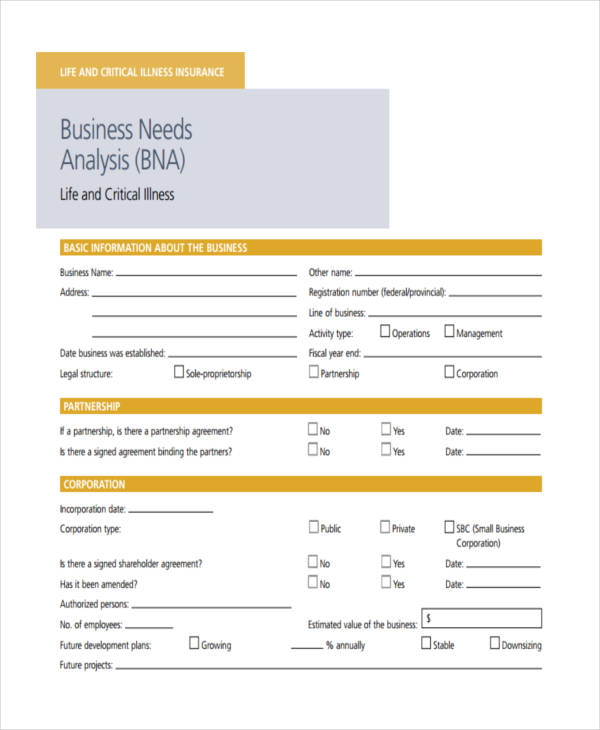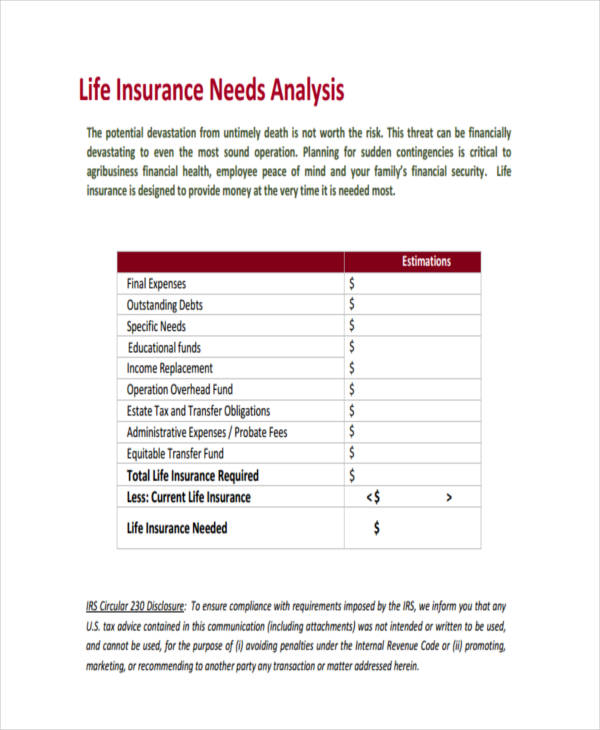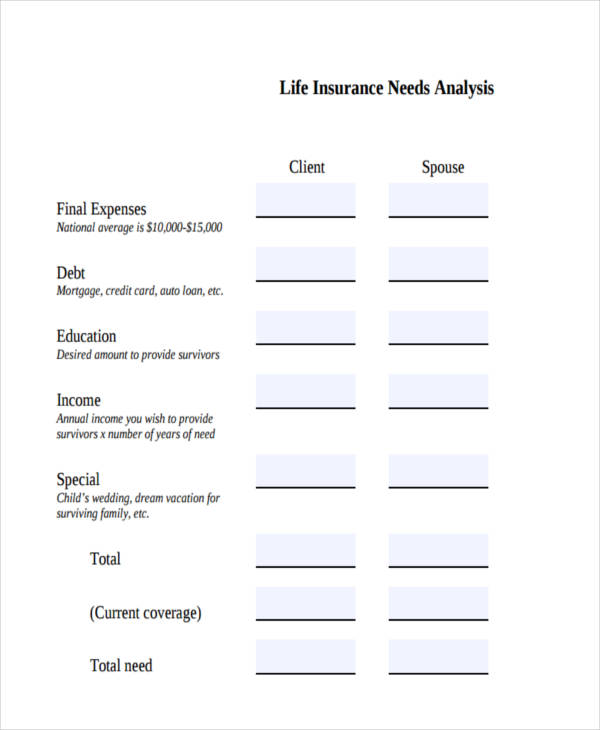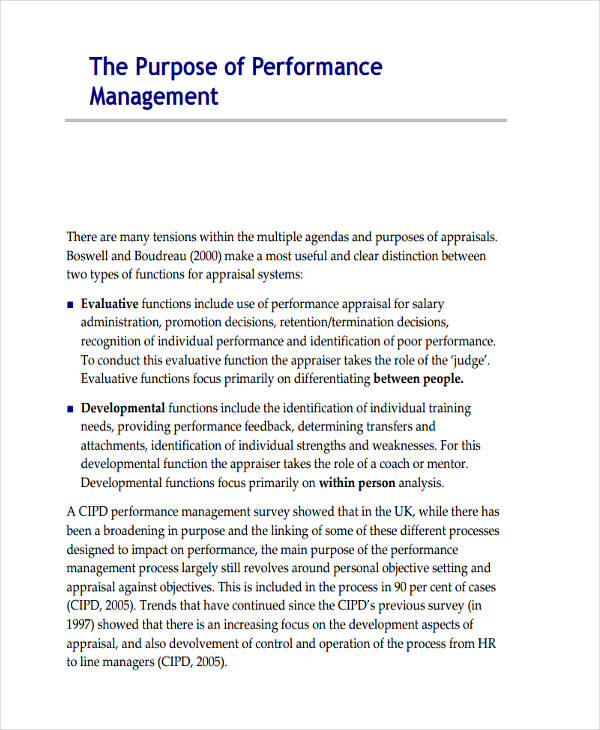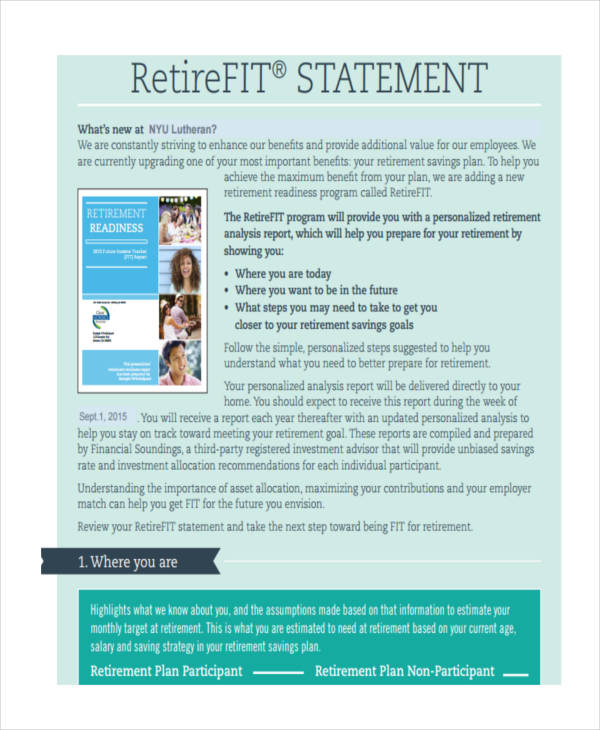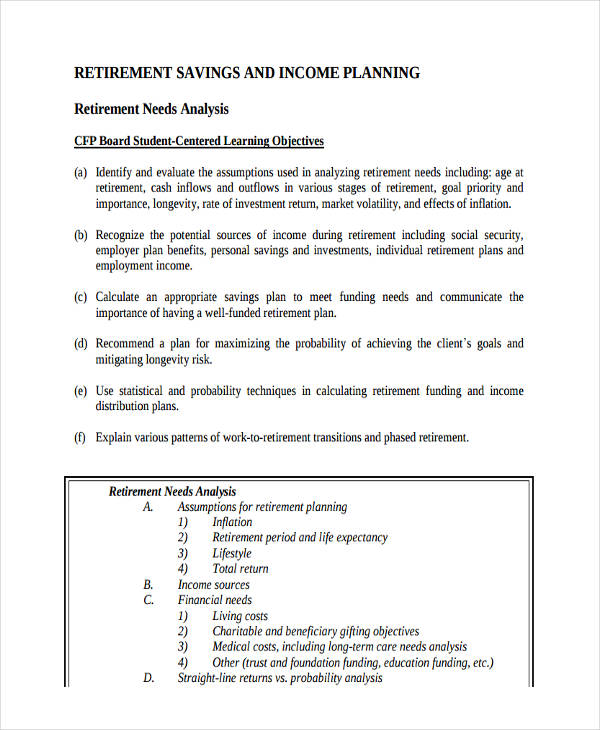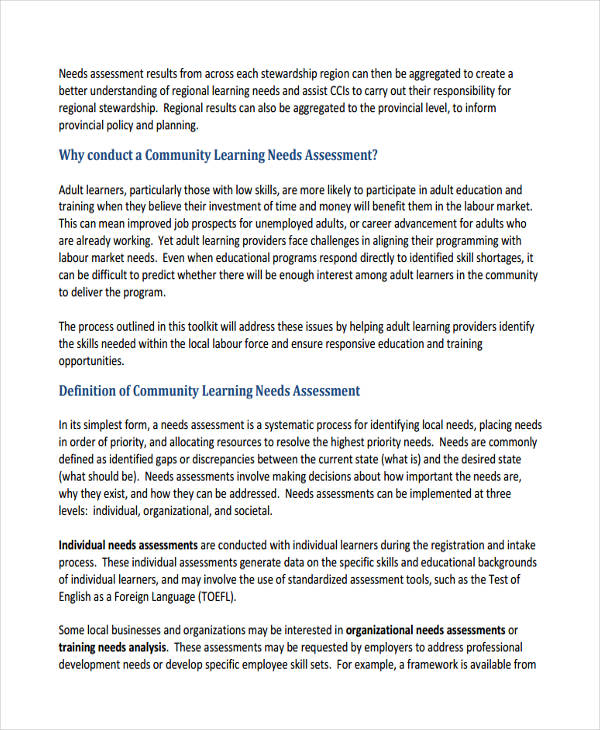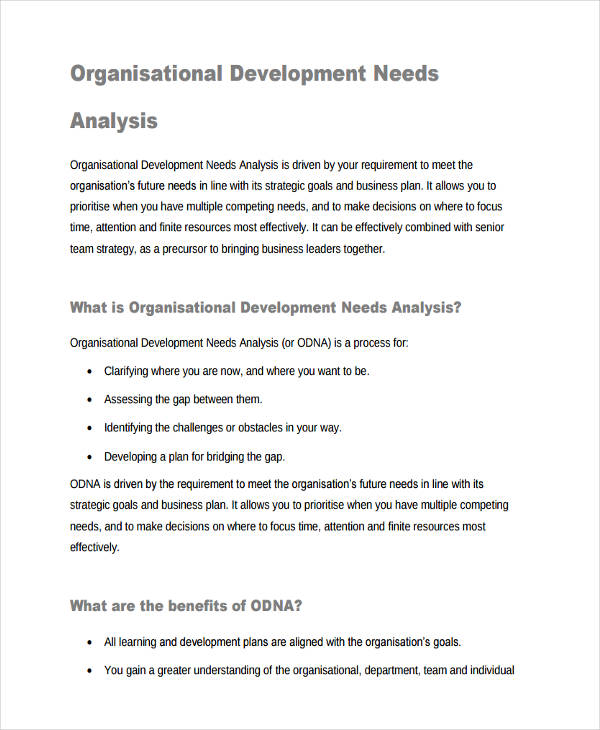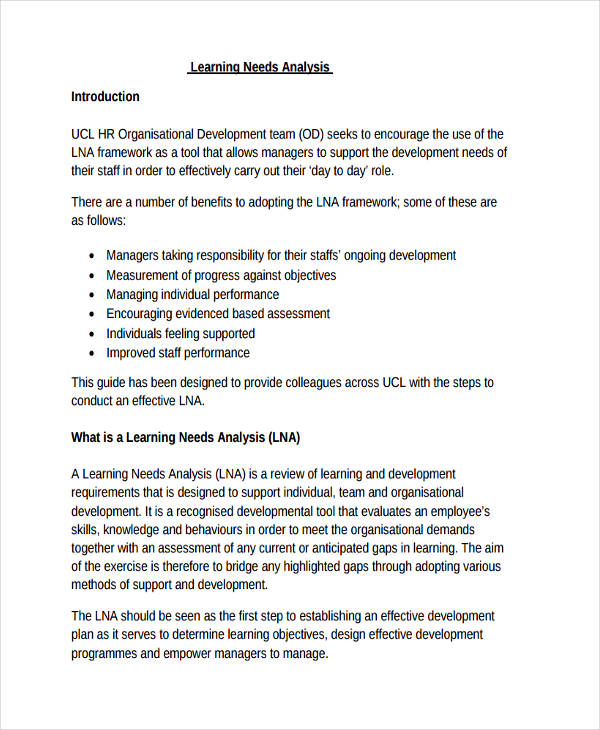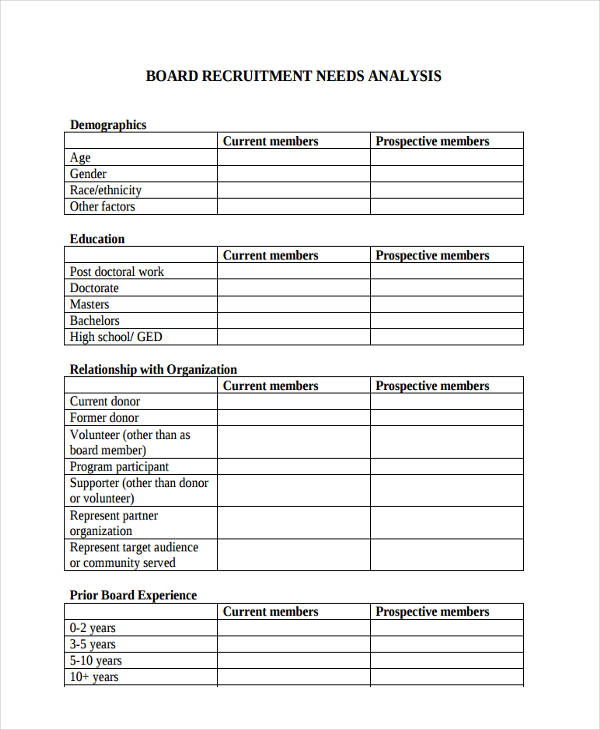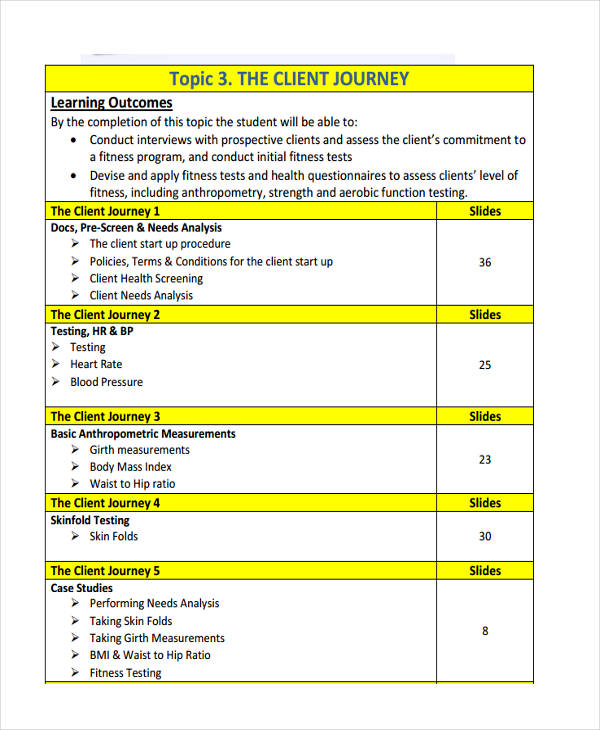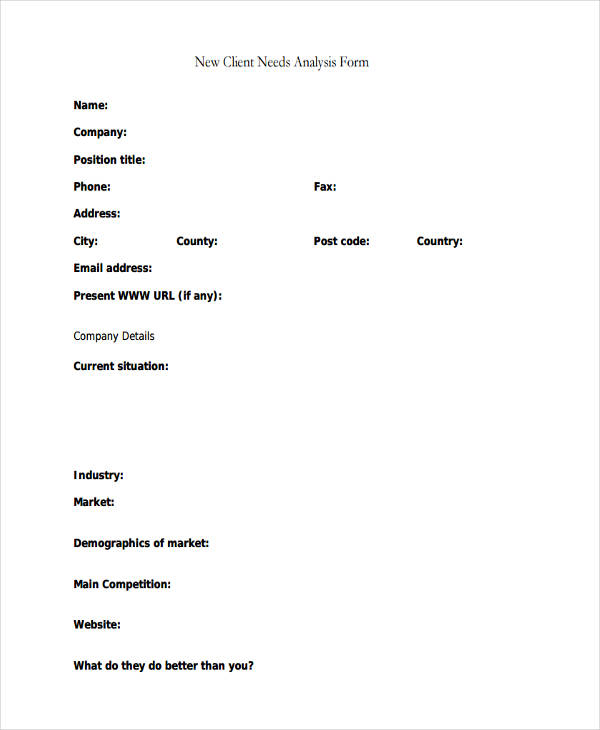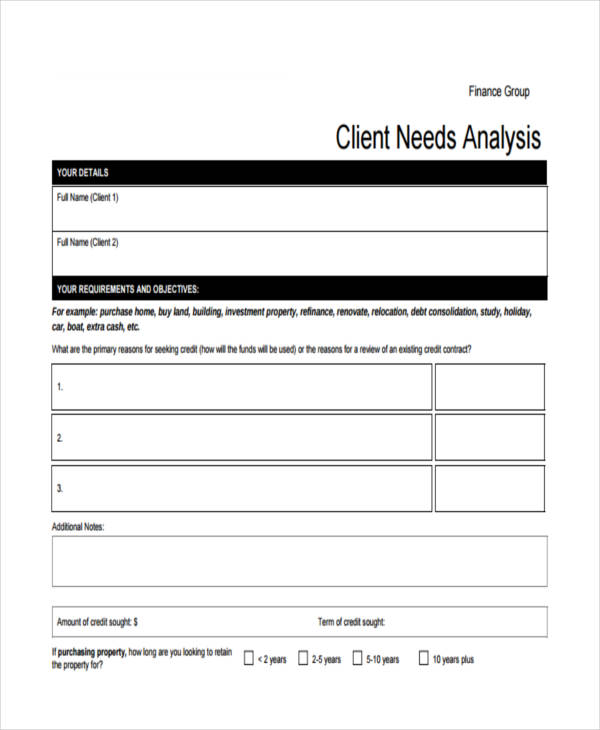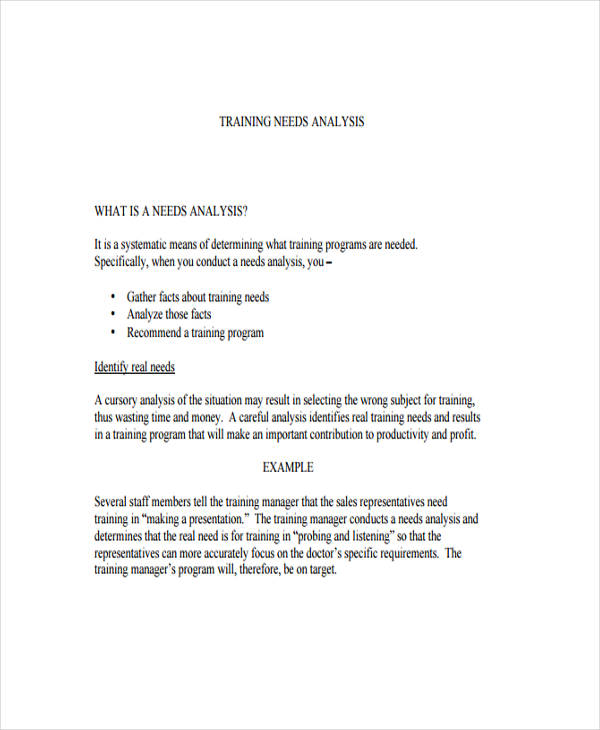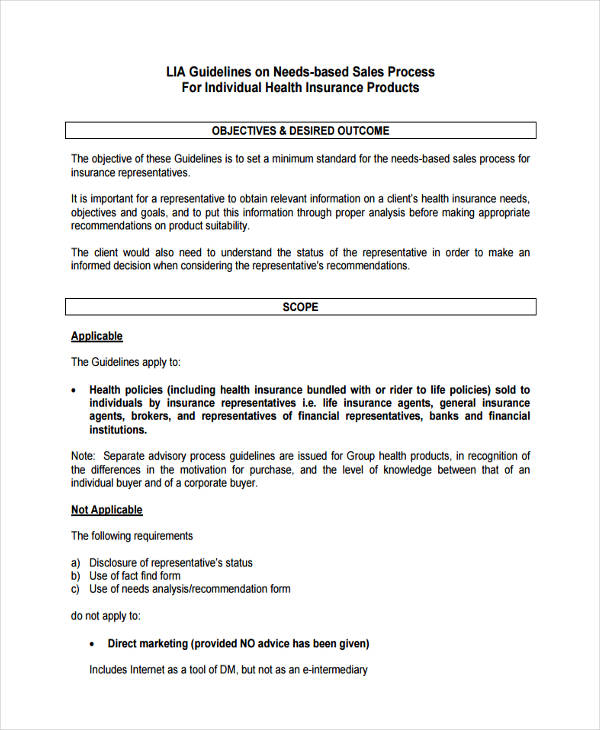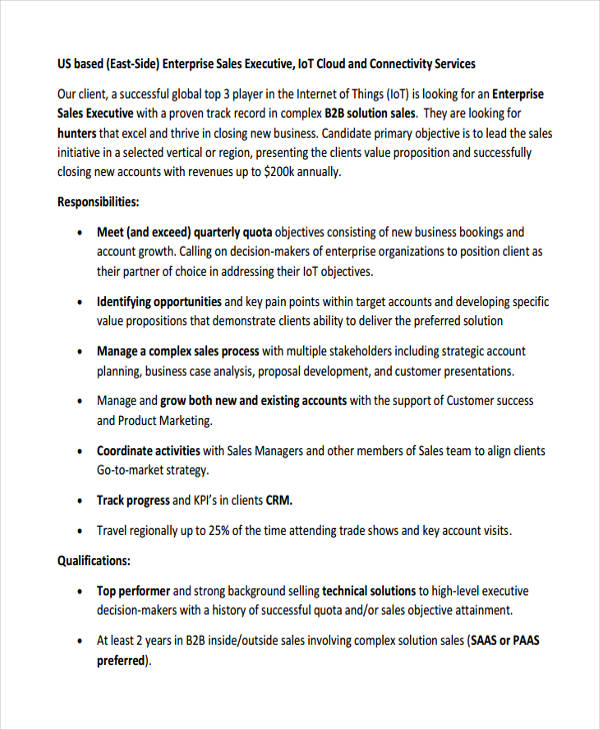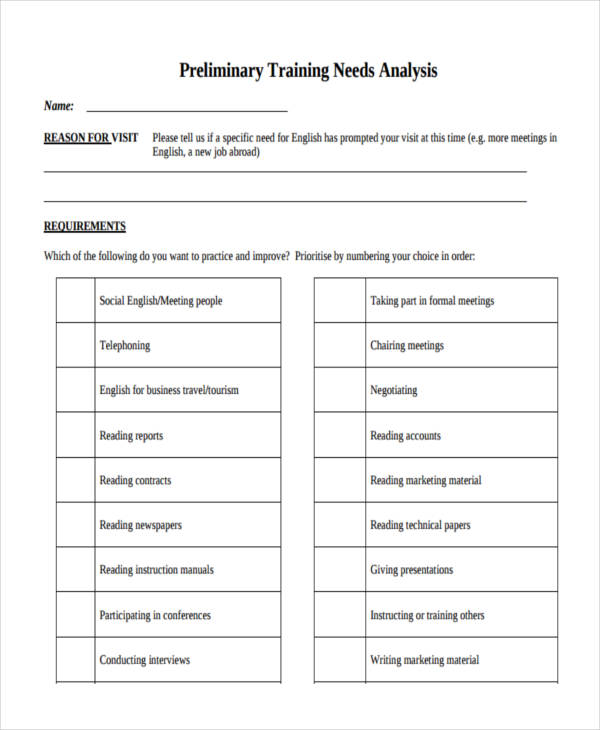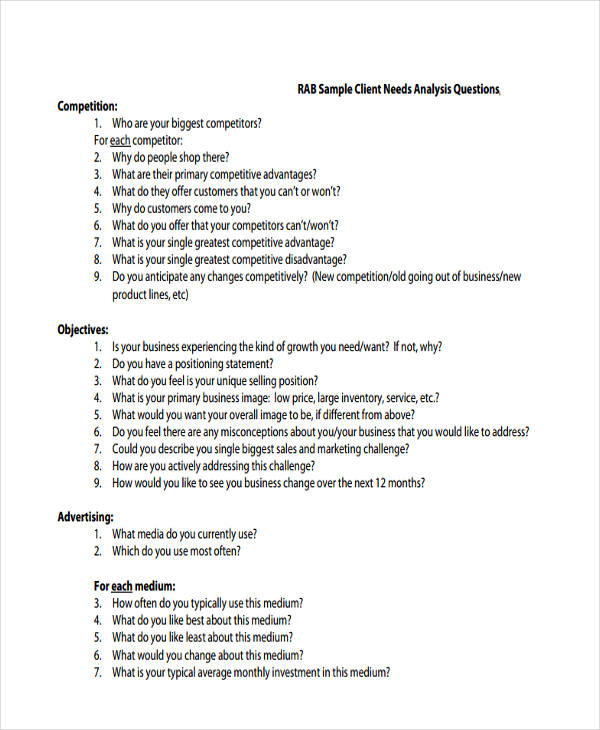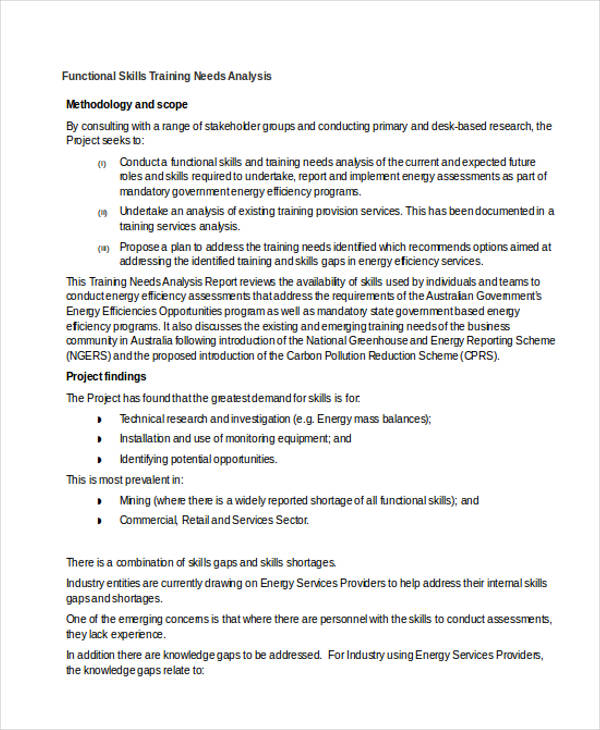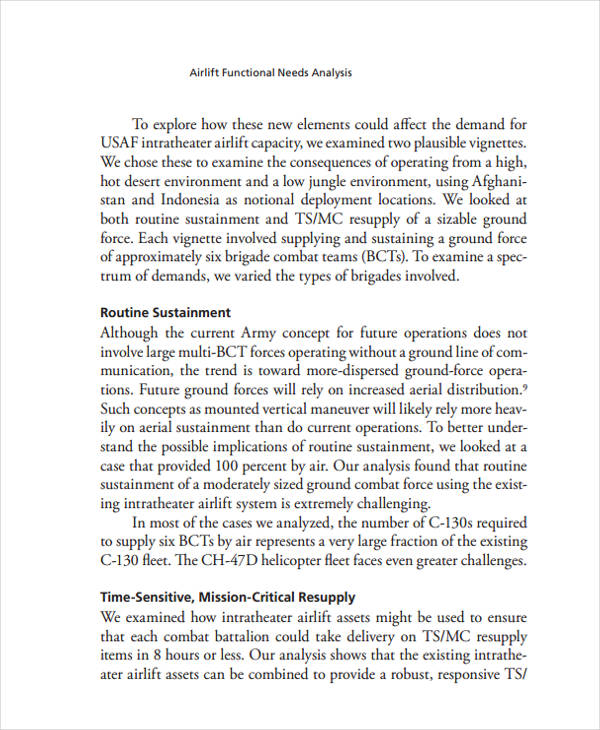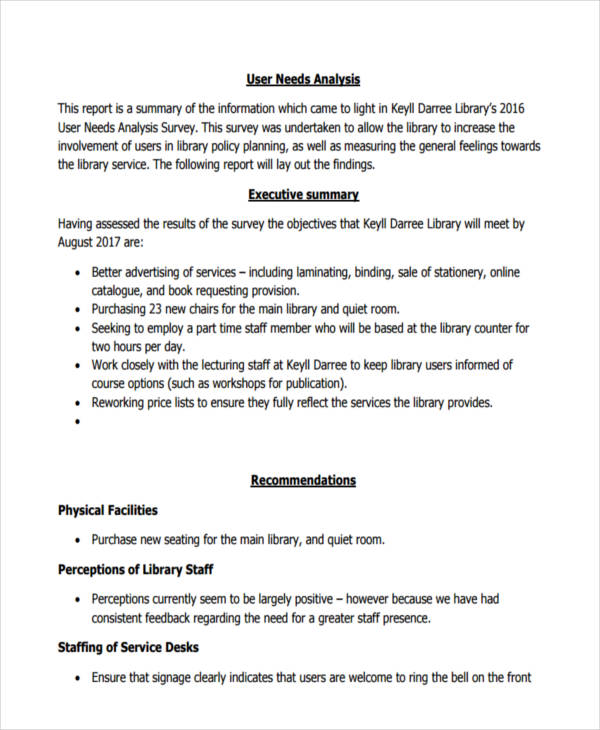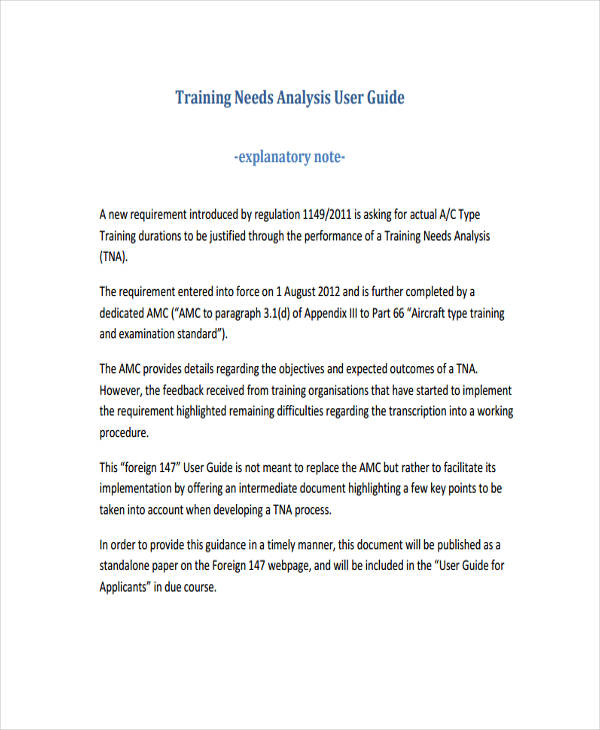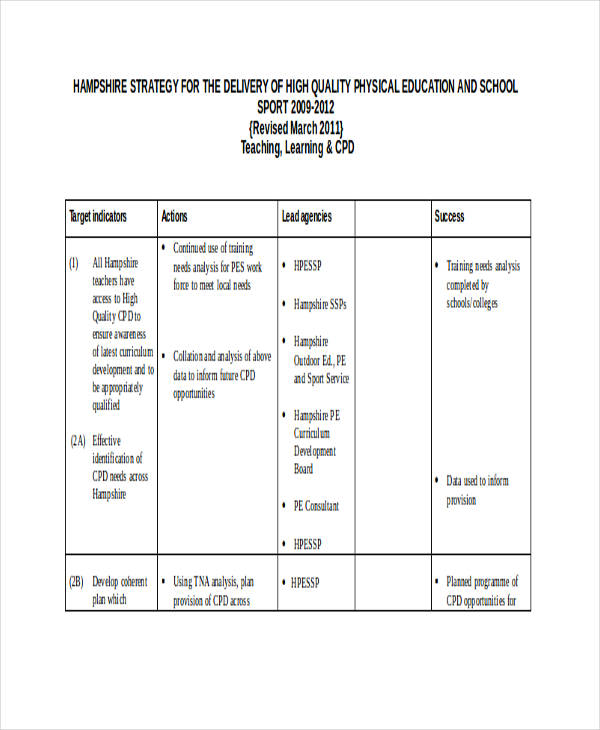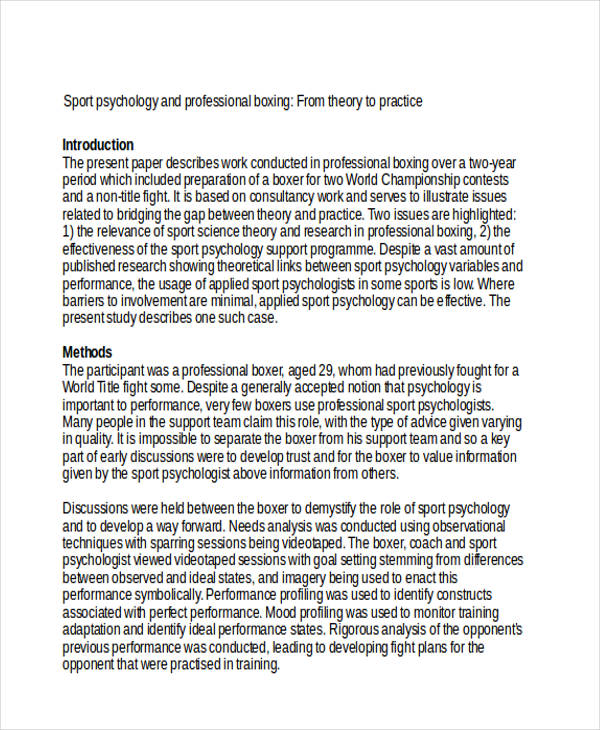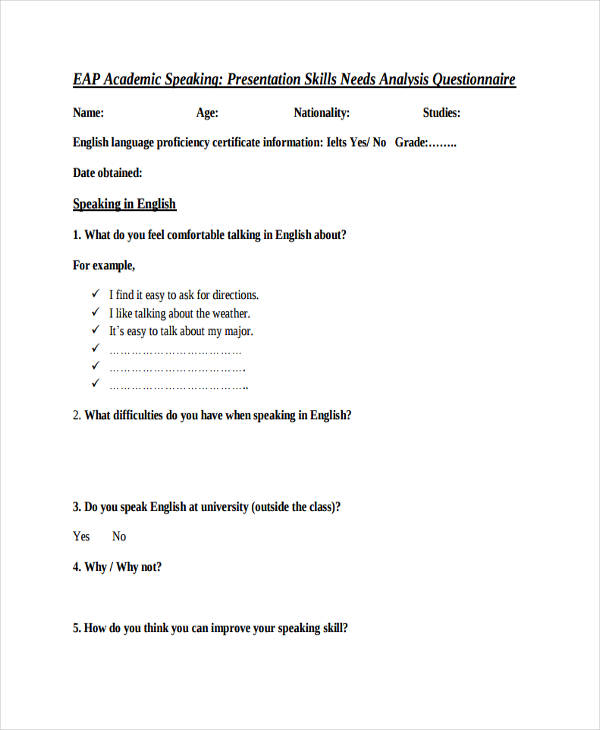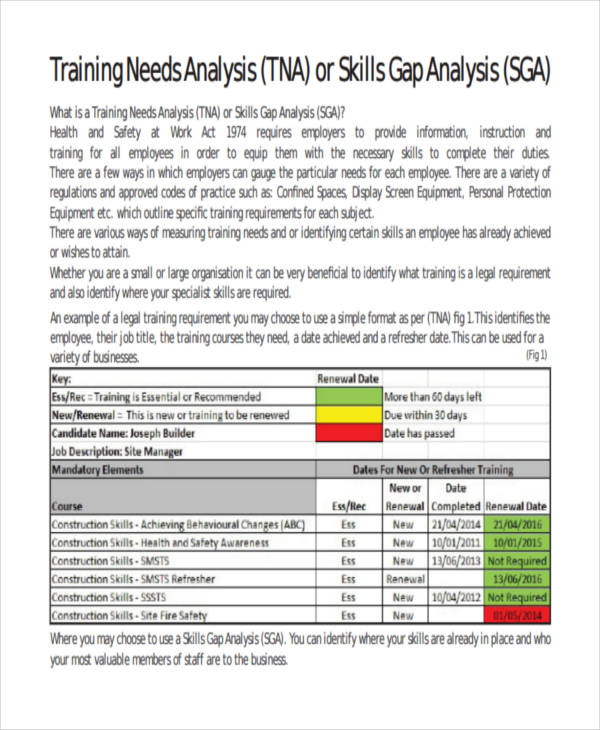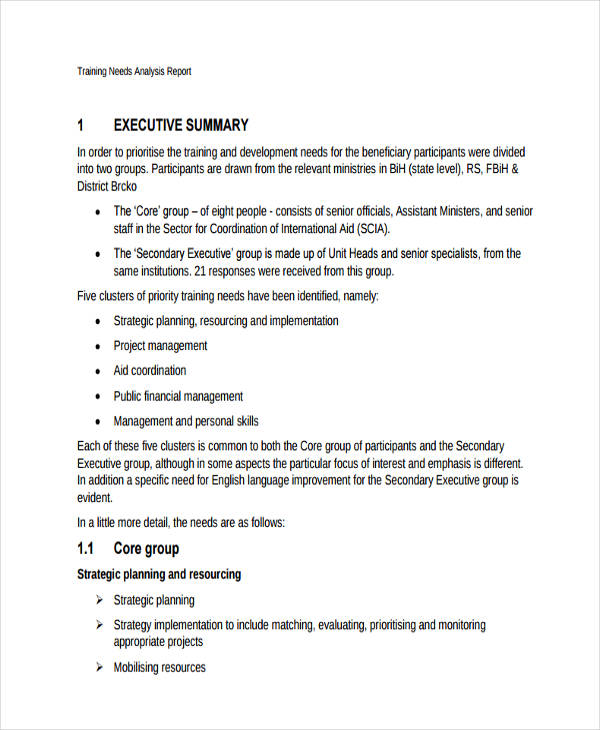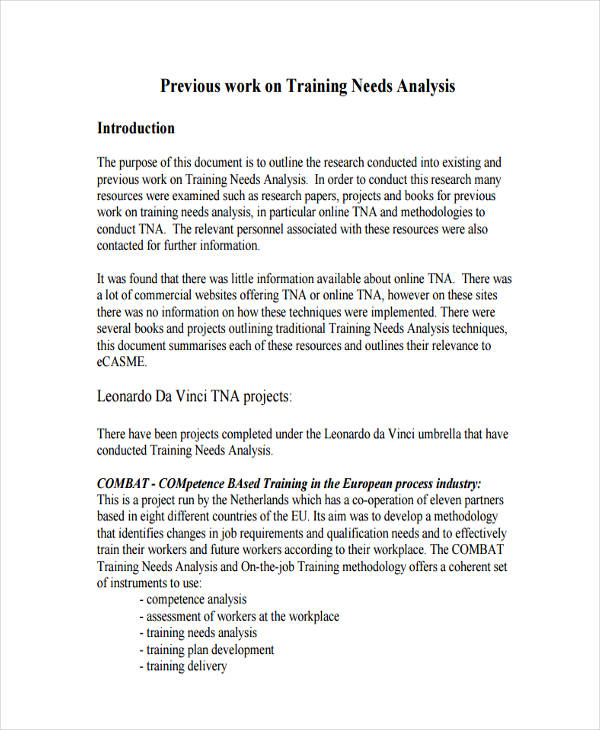50+ Needs Analysis Examples to Download
A needs analysis is the process of which the needs of the people, community, or company is analysed and then segregated based on their needs and therefore the potential to fulfil them. This is common in the commercial world to identify target markets. This helps companies cater to the needs of specific members of the target group. Without the proper limitations, one may attempt to cater to all of the different marketing segments and inevitably cause bankruptcy or the shutting down of the business analysis.
In order to prevent a catastrophe such as the bankruptcy of the business or lack of any real community purpose, the manager must first identify what type of business needs exist and determine what kind of changes they can make to improve the situation. Within the business itself, there may be needs of the workforce as well. This is a collection of simple analysis examples of different needs after going through analysis.
Training Needs Analysis Example
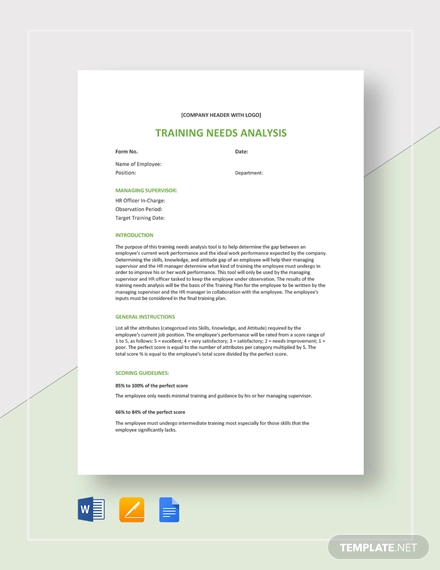
Insurance Needs Analysis
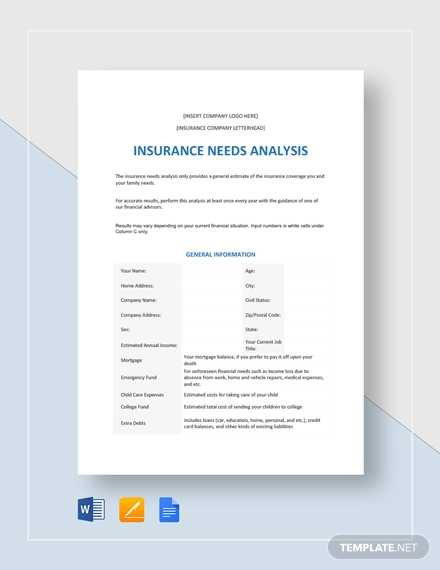
Simple Social Media Needs Analysis

Training Needs Analysis Template

Business Needs Analysis Template

Training Needs Analysis
Strategic Training Needs
Free Training Analysis
Leadership Training Needs Analysis
Conducting Training Needs Sample
Employee Training Analysis
Why Do I Need to Analyse My Needs?
Without identifying the needs of a community, a company, or even yourself, you have no hope of actually addressing them and moving forward. Failure to analyse where one is compared to where one wants to be is one of the biggest reasons people and companies are held back from their full potential.
A needs analysis will allow you to more precisely address these needs and fulfil them. For many commercial companies, this means you will be able to position your products to sell to potential consumers you’ve identified as your target market.
What Is the Most Important Element of a Business Needs Analysis?
Sometimes, before you can properly separate or “target,” the marketing team would need to undergo a special Training plan Analysis to determine whether their skills are up to par for this crucial job. No surprise, people would think the most important element of a needs analysis would be the cost of training.
However, that is not the case. If you are focusing on the cost of things then you are conducting a Financial Analysis. Because the most important element of a needs analysis is not the cost but the proper evaluation and training for the individuals. The training of the individual will allow for a “chance of redemption” over past performance and quite possibly increase future performance of that individual.
Financial Needs Analysis Examples
Free Financial Needs Analysis
New Financial Needs Sample
Financial Planning Needs Analysis
Customer Needs Analysis
Customer Service Needs Analysis
Business Needs Analysis
Small Business Needs Sample
New Business Needs Analysis
Business Security Needs Analysis
Business Insurance Analysis
How to do a Training in Needs Analysis?
To train yourself or others to conduct a needs analysis, these Free Analysis Examples will help you learn from example. Take note of the analysis examples in PDF.
During training, it is important to keep these things in mind:
- Conclusions or goals. Are your employees actually working to propel the Mission statement, Vision, and smart goals ? Are your goals even lined up with the need in the world you are trying to fill? Have you even identified a need you as a company are uniquely qualified to fill? First things first, have these in place before training others to identify external needs.
- Employee mind-set. It is important to identify or determine whether or not an individual is truly capable of performing the task they were asked to do. In most cases, employees will avoid doing tasks if they do not know how to perform that task. This is an internal need. Another case would actually be that the employee is simply unwilling to perform the task or is too inattentive to their tasks assigned to them.
- Estimate and determine total cost of training. This is in terms of money as well as time and manpower energy. Before you actually start training your employees, you must determine whether or not that the cost of the training is worth the end results of the training (it usually is). Estimating the costs should help you prepare for them, not discourage you from moving forward.
Insurance Needs Analysis Examples
Life Insurance Needs Analysis
Client Insurance Needs Example
Performance Needs Analysis
Performance Management Needs Analysis
Performance Consulting Needs
Retirement Needs Analysis
Personalised Retirement Needs
Retirement Financial Needs Sample Analysis
Community Needs Analysis
Community Health Needs Analysis
Community Learning Analysis
Organizational Needs Analysis Example
Organizational Development Needs
Organizational Training Needs Example
Conduct Organizational Needs Analysis
Learning Needs Analysis
Individual Learning Needs
Recruitment Needs Analysis
Board Recruitment Needs Analysis
Client Needs Analysis Example
Fitness Client Analysis
New Client Needs Example
Financial Client Needs Analysis
Client Training Analysis
What Is a Training Assessment?
A training assessment is essentially a means of evaluating or “grading” an employee’s overall performance during their allotted training period. This is done so as to “test” the potential employee in their capability to perform the tasks they are assigned to. This is mostly done in an Organizational Analysis so as to be able to determine the value of that potential employee and whether or not they should allow that employee to continue working in that role.
How to Do a Needs Analysis on Intervention Programs
Doing a needs analysis on prevention programs is a critical step to make sure your intervention program actually addresses the problem it is trying to solve. This is similar to a Business Analysis in terms of purpose and function: to make sure your program or business is on the right track.
Sales Needs Analysis
Sales Training Needs Analysis
Sales Process Needs Sample
Sales Customer Needs Analysis
Marketing Needs Analysis Example
Marketing Training Needs Analysis
Marketing Client Needs Sample
Functional Needs Analysis
Functional Training Sample Analysis
Army Functional Needs Example
User Needs Analysis
User Information Needs Analysis
User Training Needs Sample
Sports Needs Analysis Sample
Sports Training Needs Analysis
Sports Psychology Needs Analysis
Skills Needs Analysis
Presentation Skills Needs Sample
Communication Skills Analysis
Skills Training Needs Analysis
Project Needs Analysis Example
Project Management Needs Analysis
Project Training Analysis
Performing a Needs Analysis
Performing a needs analysis may seem complex enough to warrant a Process Analysis, just to make sure you have the right ground covered and in the right amount within a time frame. As long as you have the general principles locked down, it should be easier than you think.
Let’s take a skills training analysis for example. When you are trying to identify the gap in employee skills (i.e., their “needs” and how it relates to the company’s need), there are some basic things you need to do.
- Observe and recognize current employee performance. This observation is what will clue you in to the need for a needs analysis in the first place. This step is simply means noticing a lack of employee enthusiasm in performing their assigned task or objectives.
- Identify current skills and expected skill sets. This includes level of performance in each skill. Where are your employees at currently, and where would you want them to be?
- Develop methods to increase or enhance employee performance. Once you’ve identified the problem, creating a training program that will allow you to fulfill the employee’s potential. The training should focus on more than one aspect of each employee’s capabilities so as to enhance their overall performance management.
- Evaluate overall employee performance. This final stage is common to all analysis processes. This is where the evaluator will determine the before and after performance on completion of a training period so as to determine whether or not the employee has improved at all. If the employee has yet to improve or has begun to even further “fall behind” the employer has no choice but to seek a more effective replacement. That too is a need, but a different one: yours.
These steps may not come as a surprise to you. And now by using the above examples, you can figure out how to take these common-sense ideas and apply them to your own business analysis situation.



